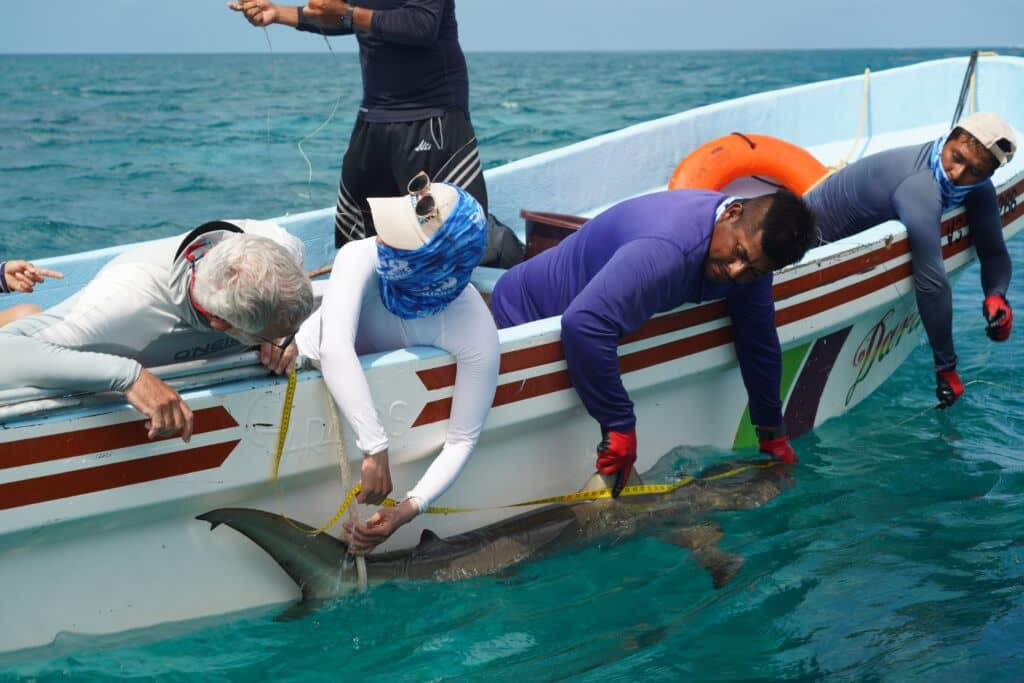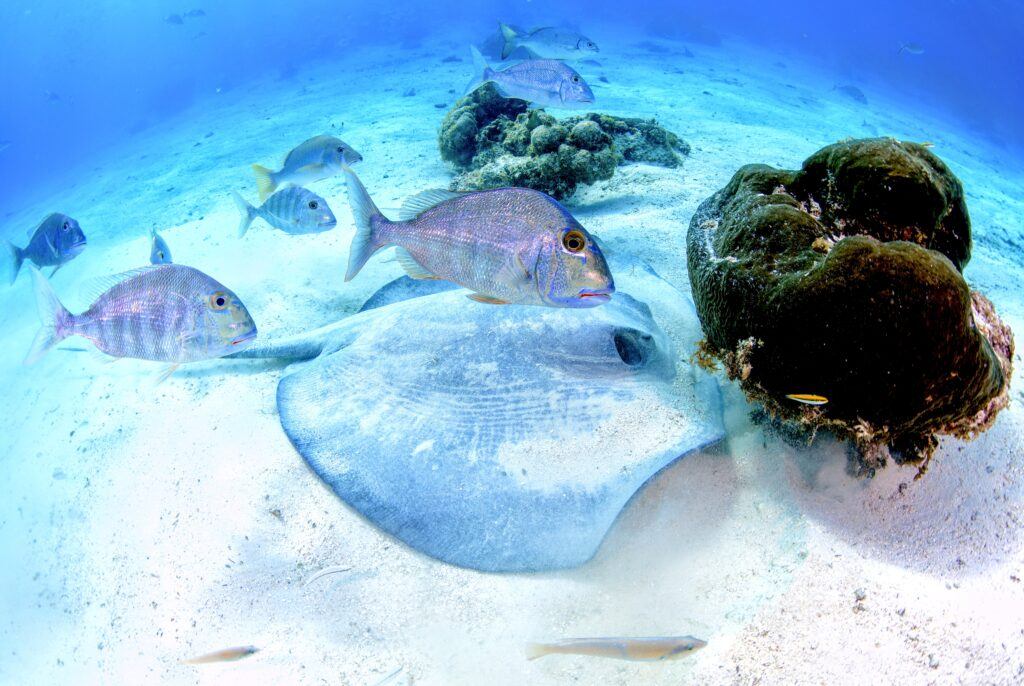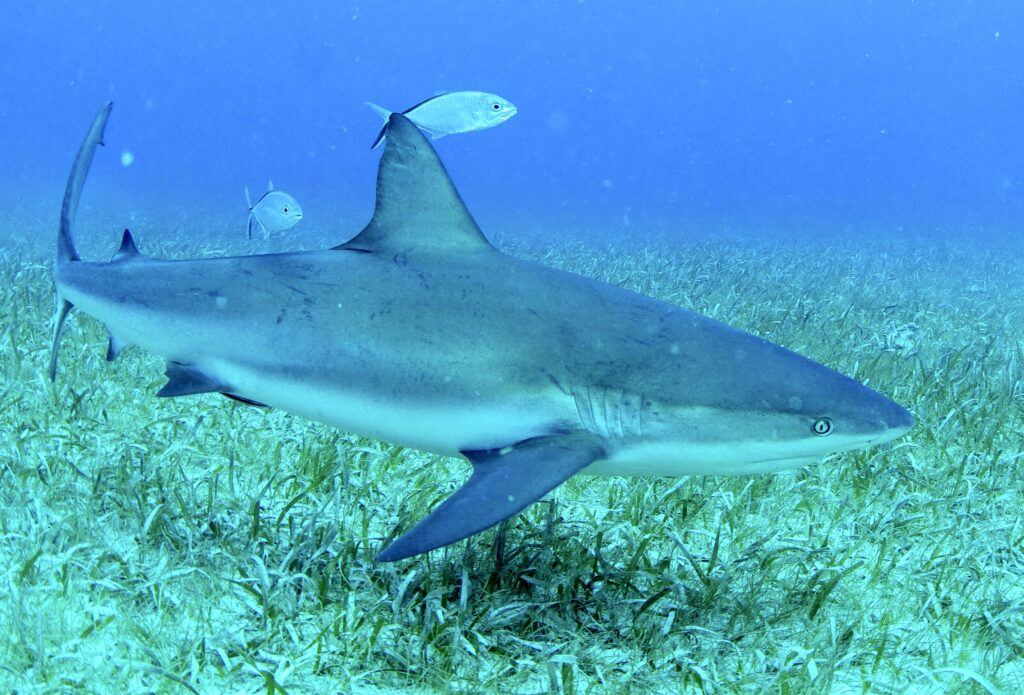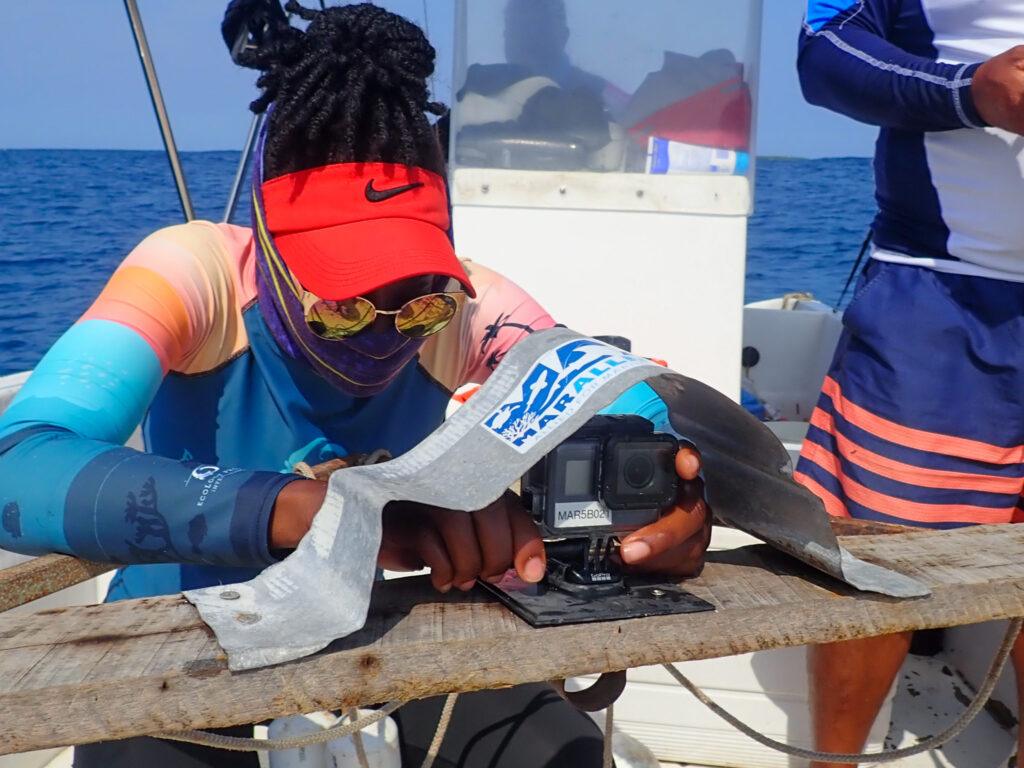After taking measurements, Ivan Torres released the Caribbean reef shark’s dorsal fin and watched it glide away from the starboard side of his boat. While these sharks were familiar to traditional fishers like Ivan, they had become a rarer sight in Belize until recently. Overfishing has broadly and negatively impacted marine species and the condition of Belize’s reefs and atolls is declining. By enlisting the help of fishers in their annual censuses, MarAlliance gathers crucial data that drives Belize’s conservation strategies to boost wildlife recovery. This year’s data revealed a surprising rise in certain shark populations, compelling evidence that MarAlliance’s support of local efforts to relax fishing pressures and improve protected area management is working.
Monitoring marine wildlife is the backbone of MarAlliance’s conservation efforts. For nearly a decade, they have generated influential data, including population estimates, for sharks and rays throughout the Americas to encourage additional protections and legislation. To cast the widest net possible for their research, and to democratize marine science, MarAlliance partners with fishers to monitor wildlife every year. Ivan is a long-time collaborator involved in all aspects of their fieldwork, including censuses.
In 2022, MarAlliance and their fisher network conducted a national marine wildlife census in Belize. This massive endeavor involved three boats, with up to 20 people per site surveying key habitats in and around 11 of Belize’s 14 marine protected areas. To calculate the most accurate estimates of focal species, MarAlliance utilizes three main census techniques—snorkeling surveys, underwater video recordings, and the catch, tag, and release of endangered species. MarAlliance’s census results assess the effectiveness of Belize’s conservation legislation and inform course corrections when necessary.
Results from their recent census were mixed, demonstrating that many protected areas are not effective at protecting sharks, but also showing that in more remote sites, major wins are possible when legislation and conservation are implemented together. MarAlliance found that the halt of shark fishing during the COVID-19 pandemic, coupled with improved protected area enforcement over the past five years, led to a tenfold increase of Caribbean reef sharks at Turneffe Atoll and a 300% increase at Lighthouse Reef Atoll. They also documented Critically Endangered hammerheads for a second year in a row, suggesting that they are slowly repopulating these areas. However, fewer rays and turtles were recorded, even in areas where sharks—their natural predators—weren’t abundant, suggesting the illegal poaching of both is ongoing. Additionally, nurse sharks now number fewer than 15,000 in the Belize Barrier Reef. But MarAlliance’s monitoring data has contributed to the passing of significant legislation, such as bans on gillnet use countrywide and shark fishing at the atolls, and they believe that in the coming years, such laws will help sharks and rays rebound.
Although much work is needed to repopulate Belize’s marine wildlife, MarAlliance’s scientific monitoring and censuses, along with better law enforcement and increased fisher participation, will continue to inform the recovery of Belize’s marine ecosystems. Fishers like Ivan recognize that their livelihoods are tied to healthy fish populations, and by investing in fisher partners and empowering coastal communities, MarAlliance will continue its efforts to turn the tide on the decline of Belize’s marine wildlife.





1 Comment